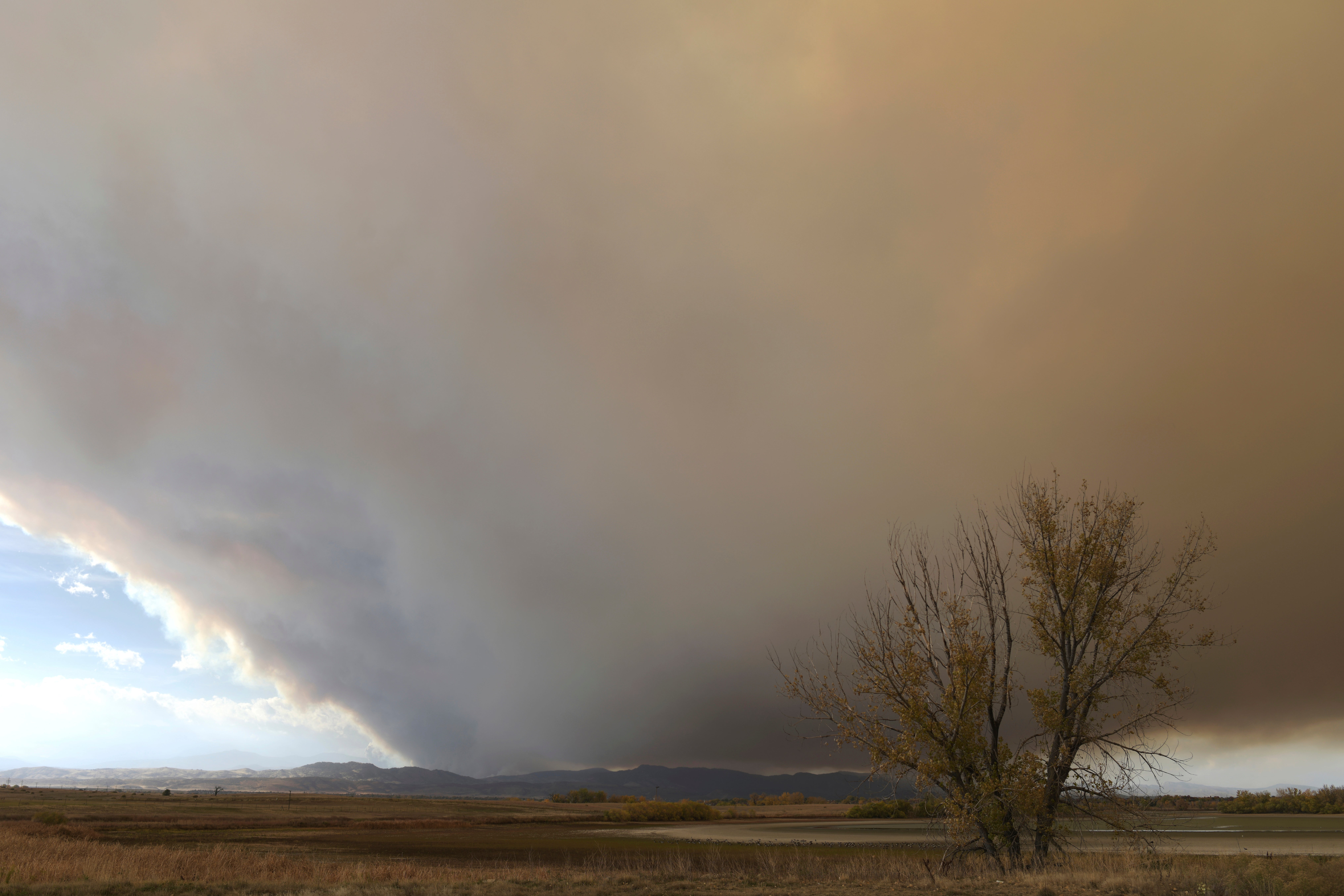Winds push Colorado wildfire to largest in state history
One of two Rocky Mountain wildfires that have been pushed by strong winds has become the largest in Colorado’s history

Your support helps us to tell the story
From reproductive rights to climate change to Big Tech, The Independent is on the ground when the story is developing. Whether it's investigating the financials of Elon Musk's pro-Trump PAC or producing our latest documentary, 'The A Word', which shines a light on the American women fighting for reproductive rights, we know how important it is to parse out the facts from the messaging.
At such a critical moment in US history, we need reporters on the ground. Your donation allows us to keep sending journalists to speak to both sides of the story.
The Independent is trusted by Americans across the entire political spectrum. And unlike many other quality news outlets, we choose not to lock Americans out of our reporting and analysis with paywalls. We believe quality journalism should be available to everyone, paid for by those who can afford it.
Your support makes all the difference.One of two Rocky Mountain wildfires fanned by strong winds has become the largest in Colorado history.
Firefighters expected windy weather to continue into the weekend but said they were well-positioned to keep the Cameron Peak Fire from burning more cabins in the mountains west of Fort Collins, Colorado.
About 90 fire engines and 500 firefighters were in place Thursday to protect homes and other buildings along the fire's especially active eastern flanks, fire operations section chief Paul Delmerico said Thursday.
"We expect a challenging few days ahead of us. But we have beefed up and feel like we have adequate resources in these areas to do what we can, especially when it comes to structural protection,” Delmerico said.
Winds gusting over 70 mph (113 kph) pushed the fire eastward across sparsely populated, high-country forest Wednesday, causing the fire to grow by 45 square miles (115 square kilometers).
As of Thursday, the fire had burned 256 square miles, making it 40 square miles (104 square kilometers) bigger than one north of the city of Grand Junction in western Colorado that held the previous record and was fully contained on Sept. 15.
The Cameron Peak Fire's growth prompted new evacuation orders as it spread toward communities outside Rocky Mountain National Park. The latest evacuations affected mainly recreational properties — including hundreds of mountain cabins — in and around the communities of Glen Haven and Drake.
The fire began in mid-August and so far has damaged or destroyed around 100 buildings, about one-third of them homes. The tally could increase once the fire cools enough to allow an updated damage assessment.
Before this week, cooler weather had been helping firefighters at the Cameron Peak Fire and the 276-square-mile (715-square-kilometer) Mullen Fire in southeastern Wyoming and northern Colorado. Despite the wind, the Mullen Fire has grown little in recent days.
The fires were active much later in the year than usual. Cold temperatures and mountain snows usually end fire season in the region by October.
Subscribe to Independent Premium to bookmark this article
Want to bookmark your favourite articles and stories to read or reference later? Start your Independent Premium subscription today.